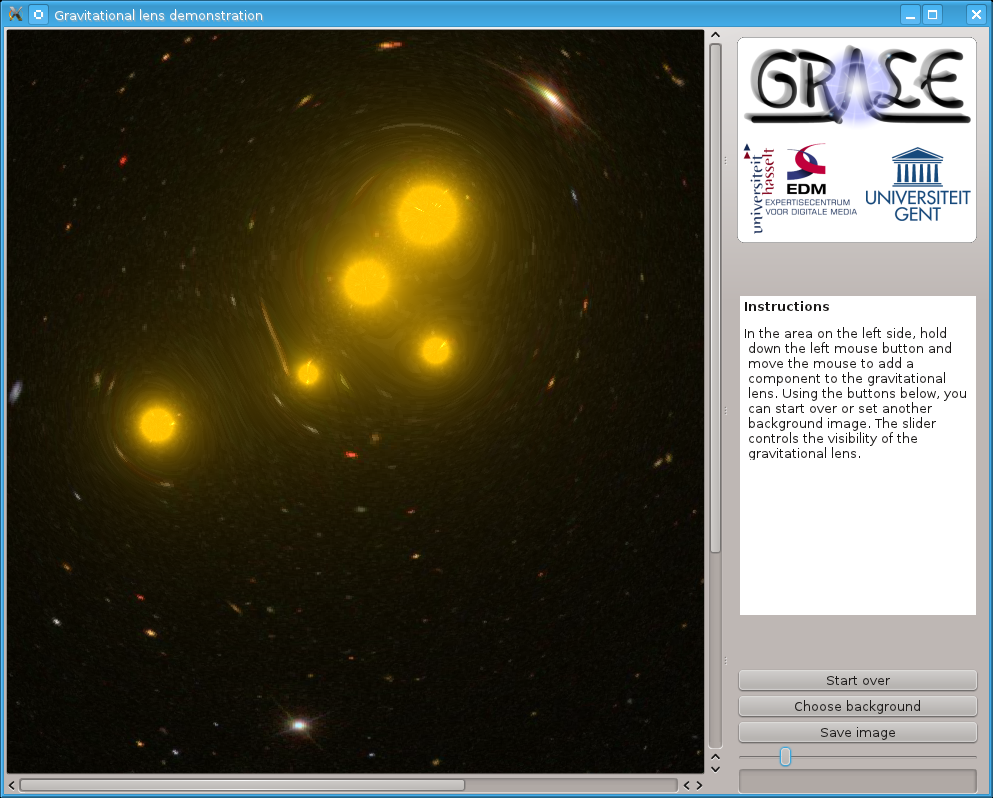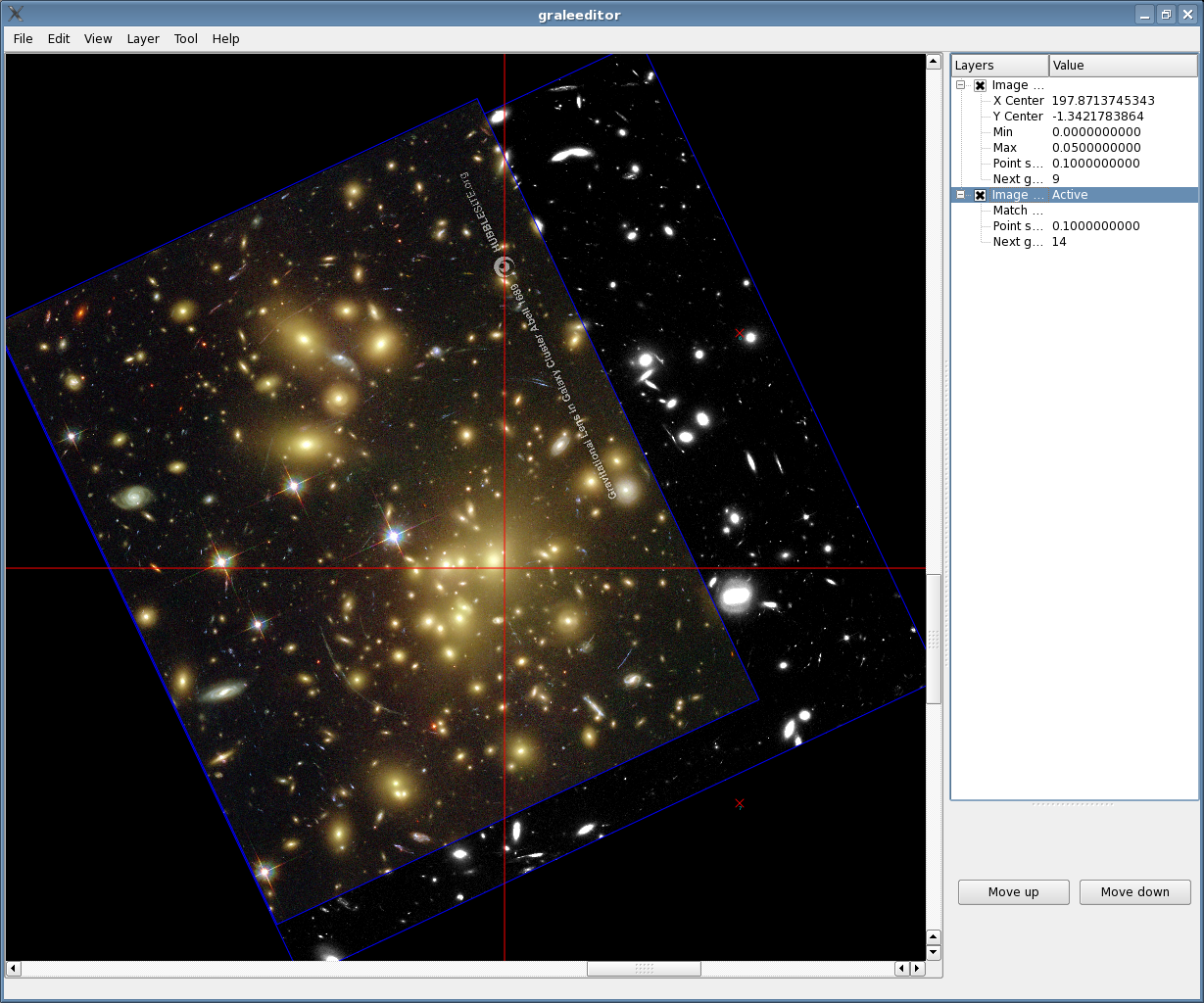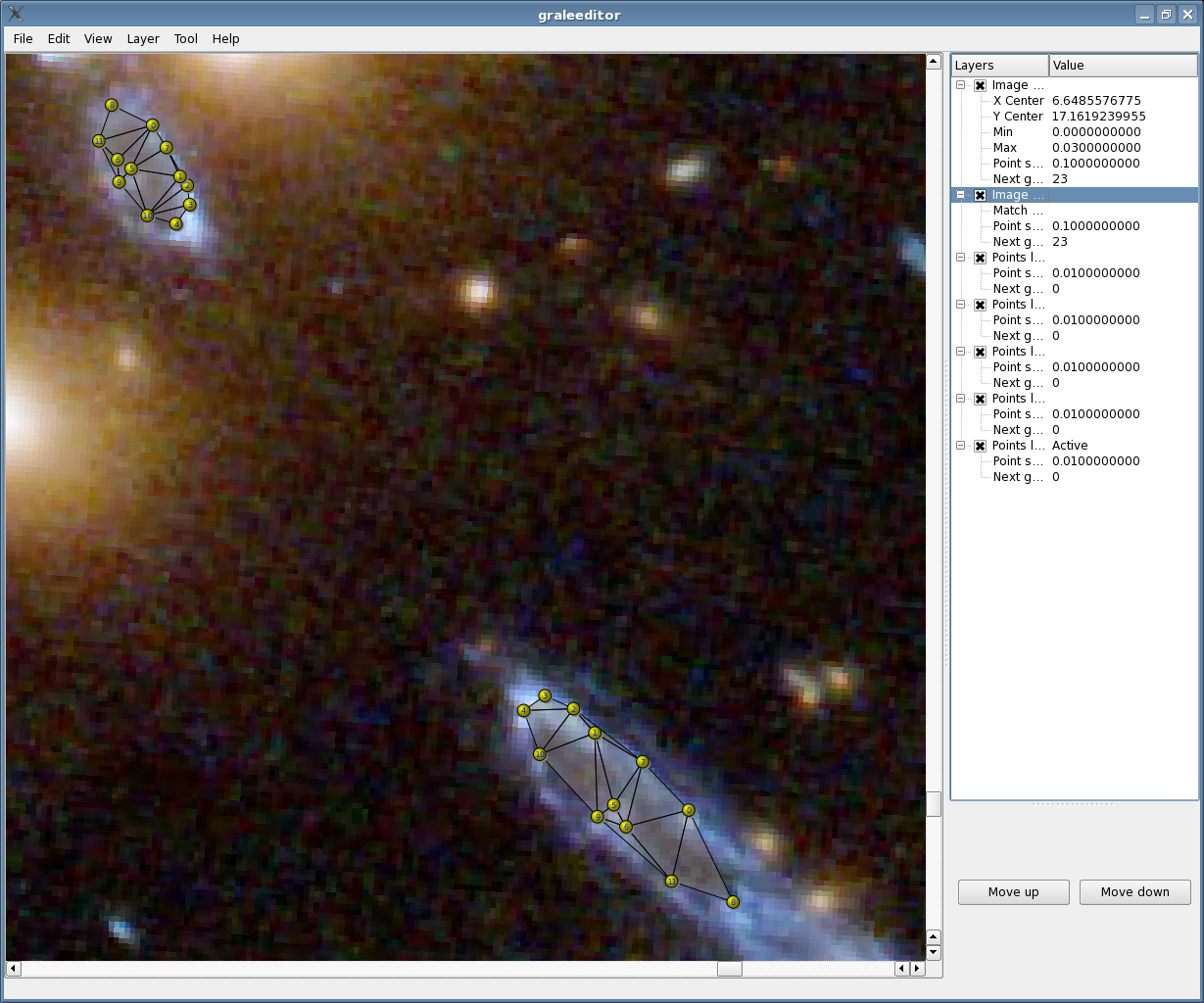Original version: GRALE v1
To be able to build GRALE and GRALESHELL, you need to have GSL, the GNU Scientific Library, installed. Having Qt installed may also be useful (creating PNG files, having a nicer user interface). To speed up certain calculations, having an MPI implementation available or having an OpenCL library installed is useful.
Not absolutely required, but definitely recommended (not for the MS-Windows platform) is CFITSIO
To compile GRALE and GRALESHELL, several other libraries need to be installed (in this order):
Afterwards, you should first compile GRALE, and then GRALESHELL. Below you can find the links to the source code.
The following script can be used to compile everything in a separate directory on a Linux system:
GRALE
- In '.tar.gz' format: grale-0.16.1.tar.gz
GRALESHELL
- In '.tar.gz' format: graleshell-1.5.1.tar.gz
GRALE Lens inversion modules
Note that these have never been used or tested in an MS-Windows environment, so I'm not sure if they'll work that way.
- In '.tar.gz' format: grale_gamodules-1.4.0.tar.gz
The inversion module that you're probably interested in is the one named general. Documentation about it can be retrieved in GRALESHELL using the invert/grid/usage command, or can be found on-line
Here are some lens inversion examples. The README file and the comments in the individual files explain what's being done:
- example1.tar.gz
- example2.tar.gz
- example3.tar.gz
- example4.tar.gz
- example5.tar.gz
- example6.tar.gz
- example7.tar.gz
Lensdemo
This is a small application I once wrote to demonstrate the gravitational lens effect:
The source code (depends on GRALE):
- In '.tar.gz' format lensdemo-1.0.0.tar.gz (2,081,609 bytes)
- In '.tar.bz2' format lensdemo-1.0.0.tar.bz2 (2,112,129 bytes)
- In '.zip' format lensdemo-1.0.0.zip (2,080,418 bytes)
A precompiled MS-Windows version (32 bit):
- lensdemo_win32.zip (9,266,312 bytes)
This contains both a version that simply uses the CPU to perform its calculations, and a version that uses OpenCL. The last one will need an installed version of OpenCL.dll. Note that it has only been tested with NVidia GPUs.
GRALEEDITOR
This is a tool to help create input for lens inversions. You can load FITS files, even overlay a color image if you like, select points in different images, create null space maps, add time delay info, etc. No documentation currently, so mail me if you'd like to use this and can't figure out how.
The source code (depends on GRALE):
- In '.tar.gz' format graleeditor-1.3.0.tar.gz
Some screencasts which show how to use the program, and documents describing what happens:
- graleeditor_backgrounds.webm - graleeditor_backgrounds.txt
- graleeditor_imagepoints.webm - graleeditor_imagepoints.txt
- graleeditor_screencast_20170630.webm
- graleeditor_screencast_20170708.webm
Precompiled binaries for OS X
Here you can find precompiled binaries for these programs, which include CFITSIO, OpenMPI, GSL and Qt5 libraries. The lens inversion modules are included as well, you only need to run something like
export GRALE_MODULEPATH=/path/to/gralepackageqt5/lib/
before starting GRALESHELL, to inform the program where to find the inversion modules. For the MPI version to work as well, you'll need to run
export OPAL_PREFIX=/path/to/gralepackageqt5/
Download: gralepackageqt5.tgz
Documentation
Doxygen based documentation is included in both the GRALE and GRALESHELL packages. At this moment, unfortunately the documentation of GRALE itself is far from complete. The documentation of GRALESHELL will probably be of more use and can also be found on-line:
Contact
For questions, remarks, suggestions, please send your e-mails to: jori.liesenborgs@gmail.com


